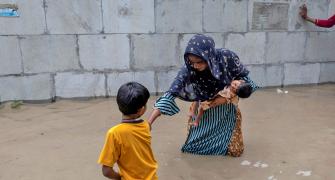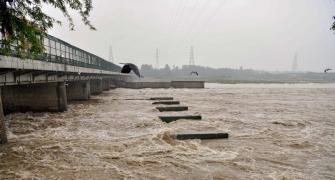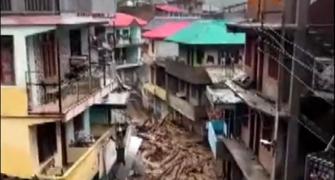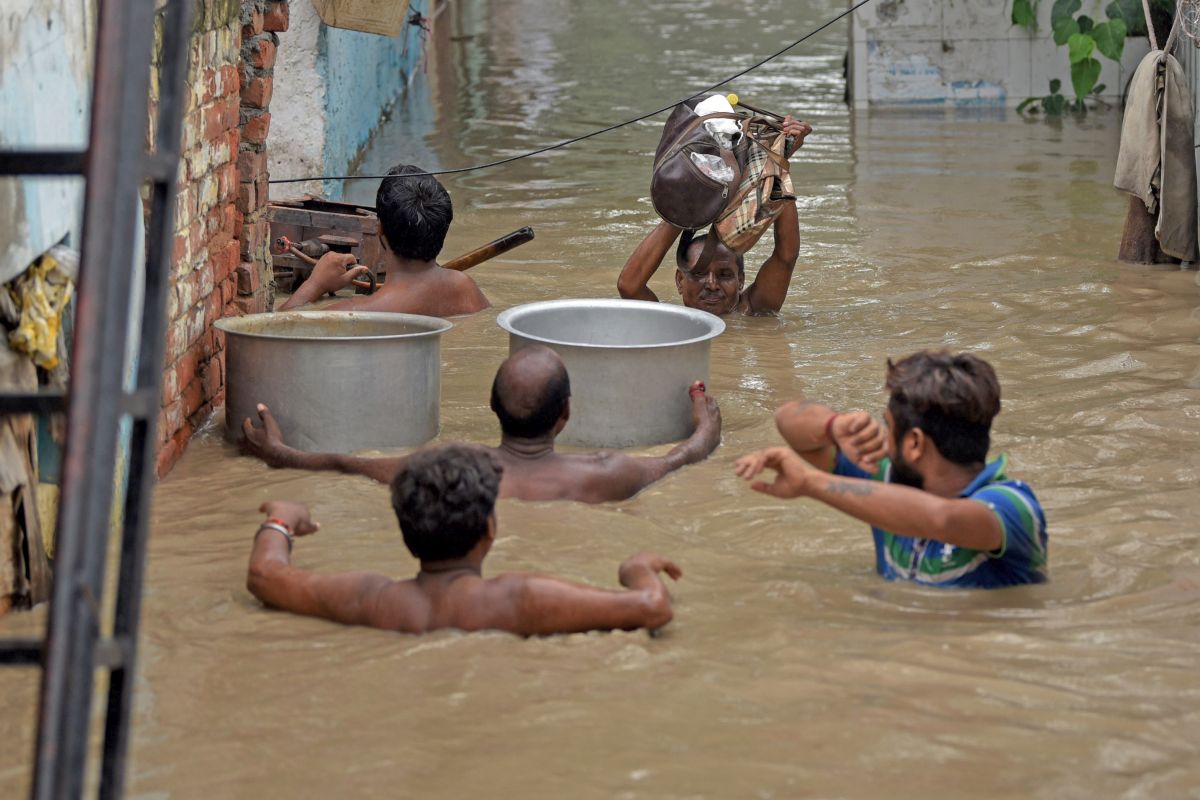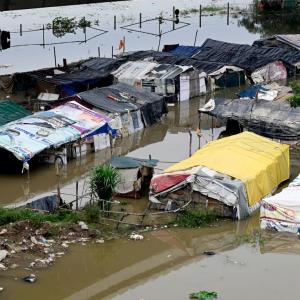Roads turned into rivers and water gushed into houses, crematoriums and shelter homes, impairing daily life in the national capital, even as the Yamuna's water level stabilised after reaching 208.62 metres, smashing the all-time record set 45 years ago by a significant margin.

As the Yamuna waters inundated more areas of Delhi and rescue efforts intensified, the city stared at a drinking water shortage.
The Delhi government has decided to cut down supply by 25 per cent following the closure of three water treatment plants -- Wazirabad, Chandrawal and Okhla.
Chief Minister Arvind Kejriwal, who visited the Wazirabad water treatment plant, warned of rationalising water supply to deal with "acute shortage".
He, however, said the water treatment plants will be resumed as soon as the situation turns to normal.
Central Water Commission director Sharad Chandra said the rate of water flow rate at the Hathnikund barrage in Haryana dropped to 80,000 cusecs at 4 pm.
"The water level has stabilised ... It is expected to drop to 208.45 metres by 3 am on Friday," he told PTI.
In view of the flood-like situation, the Delhi Disaster Management Authority on Thursday directed that non-essential government offices, schools and colleges be closed till Sunday.
The Delhi government banned the entry of heavy goods vehicles, barring those carrying essentials, in the city from four borders, including Singhu.

With traffic in the national capital, especially east Delhi, severely impaired by the closure of roads due to the overflowing Yamuna, the city's traffic police issued an advisory on the restrictions and regulation of vehicular movement.
According to the advisory, traffic has been impaired on the Mahatma Gandhi Marg between the IP flyover and Chandgi Ram Akhara as well as between Kalighat Mandir and Delhi Secretariat, and on the Outer Ring Road between Wazirabad Bridge and Chandgi Ram Akhara.
The Delhi Metro, the city's lifeline, was also hit as water from the raging Yamuna spilled onto the roads.

Delhi Metro trains were crossing the four Yamuna bridges with a restricted speed of 30 kmph as a precautionary measure, the DMRC said on Thursday. Entry and exit of passengers at the Yamuna Bank Metro Station on the Blue Line were temporarily closed due to the rising water levels of the river.
Twelve National Disaster Response Force teams, equipped with inflatable boats, ropes and other equipment, have been deployed in Delhi to help the administration in its rescue efforts.
According to a spokesperson of the force, three teams each have been deployed in central, east and northeast Delhi while two are stationed in southeast Delhi and one in the Shahdara area of the national capital.
Several key areas in Delhi, including the secretariat which houses the offices of the chief minister as well as his cabinet colleagues, were flooded on Thursday as authorities scrambled to lead rescue and relief efforts.
Waterlogging at the Kashmere Gate bus terminal forced the Delhi Transport Department to terminate buses from Himachal Pradesh, Uttarakhand and elsewhere at the Singhu border.

The Municipal Corporation of Delhi on Wednesday issued an advisory asking people not to go to Nigambodh Ghat to carry out last rites. The crematorium in Geeta Colony too was closed due to the rise in Yamuna water levels.
The Delhi civic body has advised people to take the body of their near and dear ones to other cremation grounds at Panchkuian Road, Sat Nagar, Punjabi Bagh, Green Park, Dakshinpuri or preferably in their neighbourhood.
The Yamuna waters also reached the walls of the iconic Red Fort and people were seen navigating through waist-deep and in some places neck-high water. Severe waterlogging was also reported in Rajghat and Purana Qila areas.
As the main gate of the Delhi government-run Sushruta Trauma Centre got inundated, authorities were forced to transfer 40 patients to the LNJP Hospital, officials said.
Water also entered the Delhi Urban Shelter Improvement Board's two shelter homes at Gandhi Park in Old Delhi and Geeta Ghat at Yamuna Bank -- the worst-affected parts of the national capital -- leading to the evacuation of its occupants.
In East Delhi, which is near the Yamuna river, areas such as Boat Club, Pandav Nagar, parts of Gandhi Nagar and Bhajanpura were inundated.
Despite that, the locals in some areas were reluctant to move out of their homes, officials said.
Delhi recorded a rapid rise in the Yamuna's water level over the past four days. It shot up from 203.14 metres at 11 am on Sunday to 205.4 metres at 5 pm on Monday, breaching the danger mark of 205.33 metres 18 hours earlier than expected.
The river exceeded the evacuation mark of 206 metres Monday night, prompting the relocation of people residing in flood-prone areas to safer locations and the closure of the Old Railway Bridge for road and rail traffic.
The water level breached the previous record of 207.49 metres by 1 pm on Wednesday and the 208-metre mark by 10 pm.
Major floods in Delhi occurred in 1924, 1977, 1978, 1988, 1995, 1998, 2010 and 2013.
An analysis of flood data from 1963 to 2010 indicates an increasing trend for floods occurring in September, and a decreasing trend in July, according to research.
The India Meteorological Department has, however, predicted heavy rain in Uttarakhand, Himachal Pradesh and Uttar Pradesh over the next few days.

